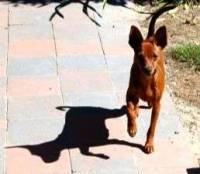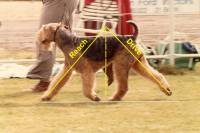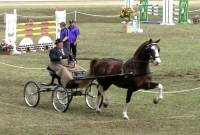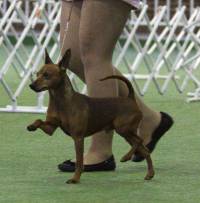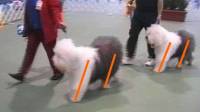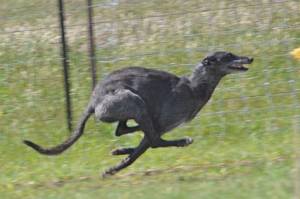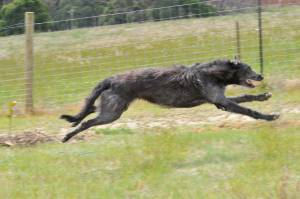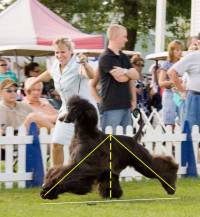Irregular heat cycles, reproductive, behavioral or thyroid problems? Human melatonin research applied to canine health, light exposure, cancer, and immune system health.

Reproductive and thyroid problems are rampant in dogs and not uncommon in people. Thyroid levels can only be determined through a specific blood test which is relatively expensive. When this was first written (2006) blood samples were usually sent off to a University lab to be analyzed, properly read, and a full report furnished to the veterinarian. That is not always the case in 2015 and frankly, not that many vets are really qualified to interpret the results and direct proper treatment.
Whether thyroid testing is done locally or sent off, accurate diagnosis is critical to restoring the thyroid gland to full function. Hyperthyroid (too much circulating thyroid hormone) or hypothyroidism (low thyroid levels) diagnosis will require different medicinal and/or herbal treatment.
The problem with treatment regimes is that they overlook the CAUSE of thyroid imbalance. Diet is a major factor is thyroid imbalance but sunlight deprivation is the primary cause of hypothyroidism (low thyroid hormone levels).
At one time, all animals received adequate sunlight. Today we suffer from light deprivation and thus, we no longer manufacture adequate levels of vitamin D, melatonin, and other vital hormones. The result is an alarming percentage of children on behavior modification drugs and school violence is at an all-time high. Antidepressants are the most-prescribed dugs in the U.S. and an amazingly high percentage of "patients" are dogs!
Think about where you and your most beloved dogs spend the most time. Then consider why the new field of canine consultants is flourishing along with human psychological counseling. Obviously house dogs are most affected by vitamin D deficiency and insufficient melatonin because they are deprived of natural, unfiltered sunlight AND they are subjected to artificial light wavelengths. Light deprivation has become a serious a problem in dogs for the same reason it is an "epidemic" in night workers.
All Mammals Need Serotonin And Melatonin
Sunlight is necessary for the production of serotonin - the "feel good" substance contained in chocolate and some anti-depressant medications... The daily migration to the city decrees a long pre-dawn trip to the city and often, an after-dark return, further depriving a large percentage of the population of those precious hours of sunlight… Violent crime is escalating and more people are on anti-depressants than ever.
In today’s hustle-bustle world, unlike our great grandparents, we work inside, under artificial and fluorescent lighting - where most show dogs spend a great part of their time! Breeders take pride in elaborate air-conditioned kennels with small widows to block the sun or the cold. They obviously don't realize that most mammals MUST have 10 hours of full sunlight to stay healthy. Watch where your house pets snooze during the day. In a shaft of sunlight right?
 Melatonin For Mood and Overall Health
Melatonin For Mood and Overall Health
A twenty year study led by neuroscientist George Brainard at the Farber Institute was based on understanding how the brain interprets, reacts to and uses light independently of the visual system. We now know how the human eye uses light to regulate melatonin production, and in turn, the body's biological clock. His study revealed a "photoreceptor system" in the human eye which reacts to specific wavelengths of light. Light in the blue region of the visible spectrum is the most potent in controlling melatonin production and the body's circadian rhythms.
Artificial light interferes with the production of melatonin. Many scientists believe circadian rhythm is linked to your biological aging clock. Interruption of the natural light and dark cycles causes stress; continued disruption causes disease. Overall cancer rates are lower in the southern hemisphere, and SAD (see below) higher in northern hemisphere. Melatonin is produced as we sleep but it is stimulated by sunlight.
By the way ladies, melatonin tablets before bedtime may aid in the prevention of breast cancer. Breast cancer rates are soaring. I'm not saying there's a connection between that and our insistence on turning night into day (and vice versa for night workers) but the low fertility rate and ever-climbing cancer rate in man and his companion animals is not coincidence. Medical research shows that melatonin suppresses the development of tumors, may reconstitute bone marrow integrity, has dramatically increased the life span and the reproductive ability of mice. Extrapolate that to your dogs, and yourself.
Through the production of melatonin, the pineal gland also plays a master role in the immune system's ability to respond to environmental challenge. Try the unthinkable – avoid TV for an hour before bedtime. The flickering light and bursts of sound emitted by your TV disrupts the body's cooling off and calming down process necessary for a good night's sleep. It does the same for your lap dog and the one dozing at your feet. Read a relaxing book instead of that dash, crash, and rumble TV show.
There's an inseparable relationship between the neuro-endocrine and immune systems, especially between the pituitary and the thymus glands which actually regulate the immune system. Melatonin works in the hypothalamus region of the brain, DURING DARKNESS. It stimulates tissue regeneration and along with serotonin, influences neurotransmitters, helps to stabilize homeostasis, and maintain connective tissues, muscles, and bones!
Since 1992 I’ve written about the adverse effect on melatonin production caused by behavior such as leaving the light on in a sleeping child’s room. The same applies to the kennel. Turn off the lights! Don’t leave the light on for a new mom. Trust me, she can “see” every puppy...
SAD - Seasonal Affective Disorder
SAD affects dogs too. "This discovery will have an immediate impact on the therapeutic use of light for treating winter depression and circadian disorders", said Dr. Brainard, professor of neurology at Jefferson Medical College University. It's called Seasonal Affective Disorder because depression occurs more during the winter months when the sun's rays are weakest and we're inside out of the cold! note: since 2010 mention of SAD seems censored as sales of mood altering prescriptions soar.
SAD mechanics are simple. Light enters the eyes in order to stimulate the hypothalamus, pineal gland, and the pituitary gland, the body's master hormone-secreting factory. How can we deny the connection between natural circadian rhythms and epidemiological studies which show an increased breast cancer incidence in women who work night shifts?
Canine Reproduction, Thyroid Hormone, And Heat Cycles
Your dream of a special litter from your sheltered bitch can turn into a nightmare of confusing heat cycles (see ref #1). One of the main consequences of light deprivation is cessation of normal reproduction. Are we all agreed that mutts conceive easily? Then why do sheltered show dogs need wine, soft music, and prayers in order to get pregnant? Is it genetics or is it because pampered purebreds are living in high-rise apartments or inside kennels?
Purebred dogs have more thyroid problems than ever before. It’s not just that veterinarians diagnose it more. The incidence is much higher. Why is that? You know. You just read about sunlight and how it enters through the iris, stimulates the pineal gland, and sets off hormone production. Where do the fertile and prolific mutts, farm dogs, and hunting dogs live? Outside. Trotting around the neighborhood or living in a “dog lot” until time to hunt. Even most (shudder) puppy mill dogs get sunlight in those rabbit-hutch cages! How much bright, unfiltered sunlight do our treasured house dogs get?
 Re-think Kennel Lighting
Re-think Kennel Lighting
If you have a kennel building, install large south-facing windows or skylights, Ott-lights or a similar FULL SPECTRUM lighting system. (Note: such lighting is now easily obtainable and reasonably priced) Do not use fluorescent lighting - barely detectable strobes can cause serious mental, emotional, and hormonal imbalance. Use natural-spectrum incandescent or LED bulbs. Note: stud cats kept under fluorescent cattery lights stop siring. Put a queen in a darkened basement and she'll stop cycling. Cats are an example because they "call" constantly during spring and early summer. i.e. during longer seasonal daylight hours. Deprive laying hens of natural sunlight or natural spectrum inside lighting and egg production ceases.
Numerous studies have revealed the hazards of
electromagnetic energy emitted by fluorescent tubes. People who work under such lights are being damaged in ways that may one day be compared to the revelations re "asbestos" and “miner’s lung.” Today children are protected from lead but instead they grow up in fluorescent-lighted classrooms and they wear sunglasses when outside. Both practices assure that the pineal gland receives inadequate amounts of light. Delinquency and juvenile violence rates are soaring.... A connection? Read on..
Sunlight Affects Mood and Metabolism In All Species
Low levels of sunlight and increased exposure to artificial light during naturally “dark” hours interferes with the production of melatonin and interrupts circadian rhythm, which is directly linked to our biological aging clock. So make sure you get adequate exposure to unfiltered sunlight. Take off those sunglasses, relax, un-stress, and sort out cloud formations for a few precious moments. A daily ten minute health-break basking in life-giving light will insure you don’t become “sad,” summer or winter.”
The Nation's Most Sheltered Canine Tested For Thyroid Imbalance
Don’t be fooled into believing thyroid imbalance is genetic. In 1991 PRESIDENT BUSH was diagnosed with and treated for thyroid imbalance and Mrs. Bush and her Springer Spaniel had complete thyroid panels run. Are we to believe that the best medical brains in the United States thought that President Bush, his wife, and their dog all inherited the same genetic code? Of course not. But all three of them spent most of their daytime hours inside, in artificial light.
Sunlight Summary: Mental, Physical, Reproductive Health
Do for yourself what you are about to do for your dogs. Make it a point to get out in the sun every day. No sunglasses. It is neither necessary nor advisable to look at the sun in order for the rays to enter the iris. Just 30 minutes in direct sunlight is equivalent to 500 mg. of vitamin D. Forget what the experts say and “expose” yourself to the sun. People have done so for thousands of years.
If I’ve failed to convince you of the importance of light, reflect on your religious teachings. In all Beliefs of which I am aware, the light and/or specifically the sun, play a paramount role. We are all descended from sun worshipers. "God is Light." "Look East". Many cultures pray facing East. The Native American teepee faced east but by the early 20th early century, most were in reservation housing and health suffered, including acute depression and alcoholism.
From an anthropological perspective, consider that man evolved with respect for and innate knowledge of the sun. From a cave dweller, he became a cliff dweller and today he is just a moving speck within a concrete metropolis. Whereas life span has doubled due to medical advances, overall health has declined. The more we are shaded by modern life, the more our health declines. You’ve got the idea. Dogs have evolved along with Man but they were not meant to live in the dark. If you apply what you now know about the critical role of sunlight, you will both benefit.
In closing, I am struck by past cognition. Much of this is extracted from my ShowSight magazine columns of the early nineties. Today Zoloft and Ambien are among the top ten prescriptions written in the U.S. and incredibly, valium and Prozac are now common veterinary prescriptions. Why do dogs need Prozac? Now you know.
So turn out the lights, go to bed when it’s dark, get up with the sun, and live in the light. Be a sun-seeker for your own health and that of your dogs; use natural spectrum bulbs; and avoid fluorescent lighting. You now know how to keep your family and your dogs fertile, healthy, and off anti-depressants!
SUNLIGHT, CANINE CANCER, & REPRODUCTION
Cancer rates are spiraling out of control in dogs. Bone and joint deformities plague breeders. Every time you turn around there's a new genetic disease. It is not because veterinary research is discovering new diseases- it is because our dogs are getting sicker!
We may complain about puppy mills but those bitches breed easily, conceive regularly, and whelp big litters. We can not say the same about pampered purebreds and you are about to learn why.
Stick with me through the reference stuff, I promise you this will be worth the read and it will change the way you think about your dog's health - and your own! If you haven't read
Part 1 - Into The Sunlight, you might want to do so before reading this as it gives you solid background on thyroid hormone and other glandular functions that affect canine reproduction.

All mammals require sunlight. We must turn to nature to protect our health, starting with the sun. Avoidance of sunlight to prevent cancer is a serious misconception which, like low-fat diets that encourage people to eat chemical-laden fake food, has seriously bad effects on reproduction, growth, and the immune system.
We adversely affect our dog's health and reproductive ability by keeping them indoors, in fact, "house dogs" - our closest friends, are the most affected by sunlight deprivation. Lack of sunlight prevents absorption of vitamin D but it doesn't stop there.
It is hard it is to get medical truth before the public. Michael F. Holick, MD, PhD, professor of medicine and physiology at Boston University School of Medicine, and until 2000, chief of endocrinology, metabolism and nutrition, was asked to resign because he advocated moderate exposure to sunlight, not total avoidance. In an effort to totally discredit Holick's research, the department chair issued this statement “Dr. Holick’s book is an embarrassment for this institution and an embarrassment for him."
Avoid the sun? Dermatologists are well paid to warn us about sunlight and ultraviolet light, scaring us to death with fears of melanoma, which of course, creates a huge demand for sunscreen - and cancer screenings.
 Cancer
Cancer is on the rise in dogs as well as humans. Even as we are warned about sunlight and skin cancer, the American Cancer Society states "We do not yet know exactly what causes melanoma …” If you read my magazine columns, you are aware of the link between “manufactured” food (laced with chemicals and preservatives) and serious health problems, including cancer. What we now know is that vitamin D may also help prevent a variety of cancers! Could that explain the higher cancer rate among pampered pets and show dogs? Could it be that they spend more time indoors than the street mutt or hunting dog?
With over 3,500 PubMed articles on the topic, the National Institute of Health has stated that "laboratory, animal, and epidemiologic evidence suggest that vitamin D may be
protective against some cancers” and subsequent dietary surveys associated "a higher calcium and vitamin D intake with
a lower incidence of colon cancer." Vitamin D from natural sunlight may also help protect against prostate cancer, increasingly common in dogs. In fact, so much so that a National Pet Press article details how dogs were used in new
prostate cancer research human studies.
Dr. Holick has over 200 PubMed articles on the topic of vitamin D, relating it to the prevention of cancers, type 1 diabetes, heart disease, and osteoporosis." Even so, sunlight's beneficial biological effect seems to have been lost to modern medicine and those who keep animals in artificial conditions.
I have written about light deprivation many times and okay, most of you were bored to death but a few actually said that you don’t wear sunglasses as much, or you quit drawing the drapes on your house dogs during the day, or like a couple of northerners reported, you’re using those natural spectrum light bulbs in the long winter months. And predictably, some have said bitches they were about to place in pet homes, suddenly began to reproduce! No kidding...
So here’s a personal but interesting example that I hope will stick in your mind. We bred Bengal cats until a doctor said Bill was allergic to cats. I flew to California and had the honor of spending a few days with Jean Mills, the developer of the hybrid Asian Leopard/domestic cat. When my f2 female would not “call” for a mate, Jean said to put a halogen light down low so it would shine into the cat’s eyes as she moved about the enclosure. Huh? She explained that the light would stimulate her hormones. Even though we had built an elaborate outside cattery, Jean said the daylight was different in NC than in Southern California and the move had thrown her off cycle. Oooo-kay…… I did as she said, the cat quickly came in season, and I added that to my health notes. I hope you are doing likewise!
About a year later, another breeder remarked that cats can not be kept under artificial light, that they “go crazy” and will not reproduce or fail to ovulate. She said that fluorescent lights were the absolute worst. I looked up at the brand new fluorescent lights over my work center and thought about how grumpy I had become. I reflected on the many hours I had previously spent outside; training, bathing and grooming my dogs and how since starting the Akita book, I had been glued to a computer screen. Interested but skeptical, I checked out a pile of books and learned how to research online. Three days later, I had those lights removed, ordered an Ott Light, picked up a leash and headed for the sunshine!

So fling open the curtains, sunlight is no harder on the furniture than a bunch of dogs. Run the kennel dogs off those comfy beds and out of the air conditioning. If you’re in the blazing south, arrange your schedule so the dogs get outside in the early morning and late afternoon. Put nursing puppies outside, let them get dirty, dig holes, and eat grubs but above all, let them soak up the sunshine.
Straight legs. Strong bodies. Reduced cancer risk. Healthy reproduction and ovulation. Those are your tangible rewards. This is not just dog medicine. Try it for yourself, especially if you work nights and sleep days. We could give you statistics on night workers but I don’t want to scare you. Besides, TheDogPlace is for dogs.... and owners, and those who care enough to research!






 Using knowledge of your own breed to judge a distinctly different body type can lead a judge astray. The Bouvier Des Flanders, a square dog, is a drover and cart dog. The Border Collie’srectangular body proportions serve it well with stops and starts, allowing graceful speed and direction changes. Its stalking crouch and gallop developed over hundreds of years makes it a premier herder. The intense gaze or “eye” completes the picture.
Using knowledge of your own breed to judge a distinctly different body type can lead a judge astray. The Bouvier Des Flanders, a square dog, is a drover and cart dog. The Border Collie’srectangular body proportions serve it well with stops and starts, allowing graceful speed and direction changes. Its stalking crouch and gallop developed over hundreds of years makes it a premier herder. The intense gaze or “eye” completes the picture. Change is often affected by outside influence: The Japanese Akita was a square, powerful dog used to hunt bear and boar. American forces occupying Japan brought in the military German shepherd which changed the Akita body proportions. When the breed was recognized in the 70s, Herding and Working Groups one Group and judges were often confused by the Akita’s body type variation. Some preferred the reach and drive of the German Shepherd’s rectangular body. Others awarded the heavier bone and square body type which came with moderate movement. Even today, there is great variation in the Akita’s body proportion, from “great mover” to a more square bodied, supremely agile hunter of bear and boar.
Change is often affected by outside influence: The Japanese Akita was a square, powerful dog used to hunt bear and boar. American forces occupying Japan brought in the military German shepherd which changed the Akita body proportions. When the breed was recognized in the 70s, Herding and Working Groups one Group and judges were often confused by the Akita’s body type variation. Some preferred the reach and drive of the German Shepherd’s rectangular body. Others awarded the heavier bone and square body type which came with moderate movement. Even today, there is great variation in the Akita’s body proportion, from “great mover” to a more square bodied, supremely agile hunter of bear and boar.
 Reproductive and thyroid problems are rampant in dogs and not uncommon in people. Thyroid levels can only be determined through a specific blood test which is relatively expensive. When this was first written (2006) blood samples were usually sent off to a University lab to be analyzed, properly read, and a full report furnished to the veterinarian. That is not always the case in 2015 and frankly, not that many vets are really qualified to interpret the results and direct proper treatment.
Reproductive and thyroid problems are rampant in dogs and not uncommon in people. Thyroid levels can only be determined through a specific blood test which is relatively expensive. When this was first written (2006) blood samples were usually sent off to a University lab to be analyzed, properly read, and a full report furnished to the veterinarian. That is not always the case in 2015 and frankly, not that many vets are really qualified to interpret the results and direct proper treatment. Melatonin For Mood and Overall Health
Melatonin For Mood and Overall Health Re-think Kennel Lighting
Re-think Kennel Lighting
 Cancer is on the rise in dogs as well as humans. Even as we are warned about sunlight and skin cancer, the American Cancer Society states "We do not yet know exactly what causes melanoma …” If you read my magazine columns, you are aware of the link between “manufactured” food (laced with chemicals and preservatives) and serious health problems, including cancer. What we now know is that vitamin D may also help prevent a variety of cancers! Could that explain the higher cancer rate among pampered pets and show dogs? Could it be that they spend more time indoors than the street mutt or hunting dog?
Cancer is on the rise in dogs as well as humans. Even as we are warned about sunlight and skin cancer, the American Cancer Society states "We do not yet know exactly what causes melanoma …” If you read my magazine columns, you are aware of the link between “manufactured” food (laced with chemicals and preservatives) and serious health problems, including cancer. What we now know is that vitamin D may also help prevent a variety of cancers! Could that explain the higher cancer rate among pampered pets and show dogs? Could it be that they spend more time indoors than the street mutt or hunting dog? So fling open the curtains, sunlight is no harder on the furniture than a bunch of dogs. Run the kennel dogs off those comfy beds and out of the air conditioning. If you’re in the blazing south, arrange your schedule so the dogs get outside in the early morning and late afternoon. Put nursing puppies outside, let them get dirty, dig holes, and eat grubs but above all, let them soak up the sunshine.
So fling open the curtains, sunlight is no harder on the furniture than a bunch of dogs. Run the kennel dogs off those comfy beds and out of the air conditioning. If you’re in the blazing south, arrange your schedule so the dogs get outside in the early morning and late afternoon. Put nursing puppies outside, let them get dirty, dig holes, and eat grubs but above all, let them soak up the sunshine.